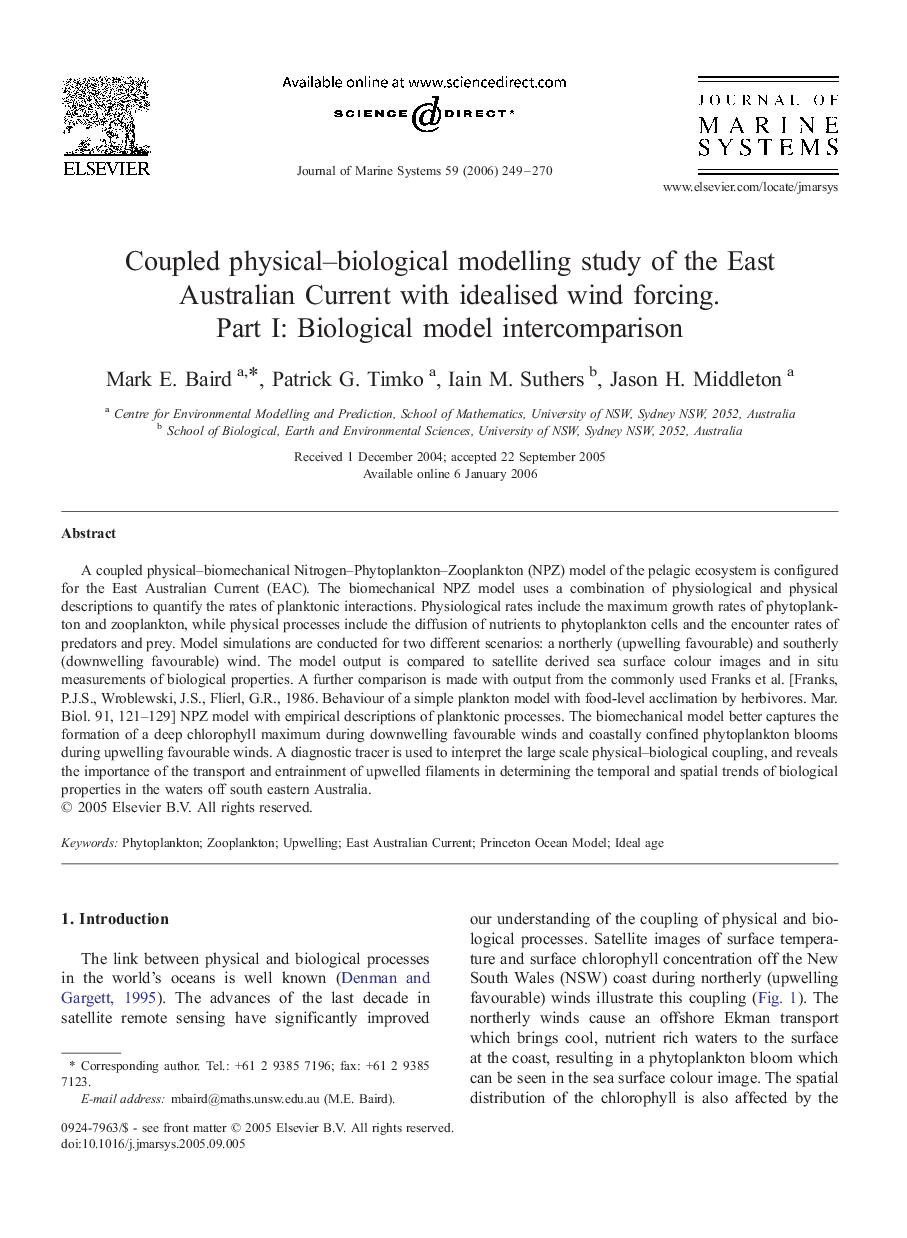| Article ID | Journal | Published Year | Pages | File Type |
|---|---|---|---|---|
| 4549487 | Journal of Marine Systems | 2006 | 22 Pages |
Abstract
A coupled physical-biomechanical Nitrogen-Phytoplankton-Zooplankton (NPZ) model of the pelagic ecosystem is configured for the East Australian Current (EAC). The biomechanical NPZ model uses a combination of physiological and physical descriptions to quantify the rates of planktonic interactions. Physiological rates include the maximum growth rates of phytoplankton and zooplankton, while physical processes include the diffusion of nutrients to phytoplankton cells and the encounter rates of predators and prey. Model simulations are conducted for two different scenarios: a northerly (upwelling favourable) and southerly (downwelling favourable) wind. The model output is compared to satellite derived sea surface colour images and in situ measurements of biological properties. A further comparison is made with output from the commonly used Franks et al. [Franks, P.J.S., Wroblewski, J.S., Flierl, G.R., 1986. Behaviour of a simple plankton model with food-level acclimation by herbivores. Mar. Biol. 91, 121-129] NPZ model with empirical descriptions of planktonic processes. The biomechanical model better captures the formation of a deep chlorophyll maximum during downwelling favourable winds and coastally confined phytoplankton blooms during upwelling favourable winds. A diagnostic tracer is used to interpret the large scale physical-biological coupling, and reveals the importance of the transport and entrainment of upwelled filaments in determining the temporal and spatial trends of biological properties in the waters off south eastern Australia.
Related Topics
Physical Sciences and Engineering
Earth and Planetary Sciences
Oceanography
Authors
Mark E. Baird, Patrick G. Timko, Iain M. Suthers, Jason H. Middleton,
